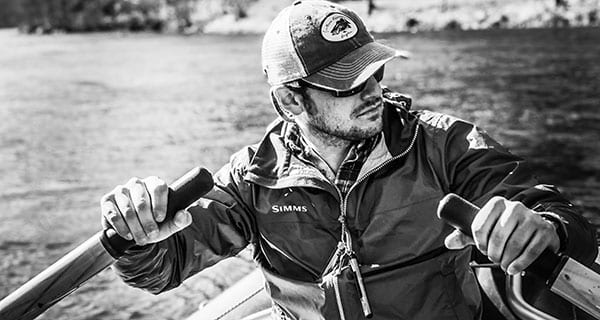I think one of the greatest privileges and responsibilities that I have as a writer and a guide is to instill a conservation ethic within the folks that I take out. There’s so much at stake, in terms of our wild fisheries populations when it comes to that, and it’s something I don’t necessarily take lightly. One thing that I highlight more often than not is the interconnectedness of the health of our forests, in particular, and how it relates to fishing. This is a topic about which I find most people have very little knowledge. I’m going to stick particularly with trout when explaining this, but it also applies to smallmouth and musky fisheries as well.
Everything in the natural world is intertwined in various cycles, and those cycles can overlap through ecosystem processes that can determine the health of multiple environments. You can think of it like a watch: if one gear fails within the watch, the entire watch eventually stops working all together. Healthy forests, in turn, create healthy fisheries for wild trout to thrive in, while unhealthy forests can, in turn, lead to a collapse of aquatic productivity.
One of the biggest limiting factors for our trout fisheries here is cold water. Cold water is able to hold more dissolved oxygen, which trout need a high abundance of to survive. The dissolved oxygen comes from gradient drops in the water (I.e, rapids and riffles). While most trout streams are found above 2,000 feet in elevation: elevation alone isn’t enough to keep the water cold enough to support those high dissolved oxygen levels. That alone comes from the shade cover provided by forests. I don’t necessarily mean trees right along the riparian zone of a riverbank, either. If you think back to the last time you went hiking in the woods: you probably saw a dramatic difference in air temperature. The tree canopy provides such a dramatic difference per acreage in temperature that it alone can determine the temperature levels of the water. Even at 3,000 feet ASL, a stream without that vital tree cover surrounding it can reach water temperatures close to 70 degrees within the heat of summer.
Forested areas also provide food in the form of terrestrial and aquatic insects. Beetles, ants, and grasshoppers fall out of trees providing easy meals for trout in the summertime. Stoneflies use overhanging or fallen trees to climb out of the water at night to hatch from their nymphal stage to their adult form. A certain species of cocooning caddies fly even uses, specifically, the needles from hemlock trees as its sole source of material to build its protective shell.
Forested land also helps to filter water and, most importantly, prevents sediment erosion into the water. Streams that have little forested cover surrounding them suffer from heavy amounts of silt in the water. This too, also helps to warm the water temperature. Even tiny specks of dirt can absorb enough UV radiation from the sun, which is then released into the water, leading to even less dissolved oxygen and serving to clog trouts gills, limiting their ability to breathe.
Forests serve as the sustaining life force of our fisheries as a whole. Maintaining healthy ecosystems here in the mountains is critical for the survival of our wild trout fisheries. The constant threat of over-development and unsustainable timber harvest should be ever present in the minds of every angler. From a conservationists perspective: I see no greater cause in the Southern Appalachians than to protect the forested land we have left, before our mountain tops are cleared for housing developments and the wild trout streams we have remaining, become a thing of the past.
Ethan Hollifield is a member of a conservation organization called 2% For Conservation and a guide for Southern Appalachian Anglers.
